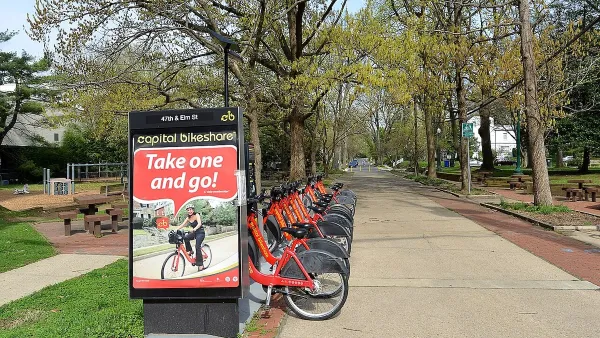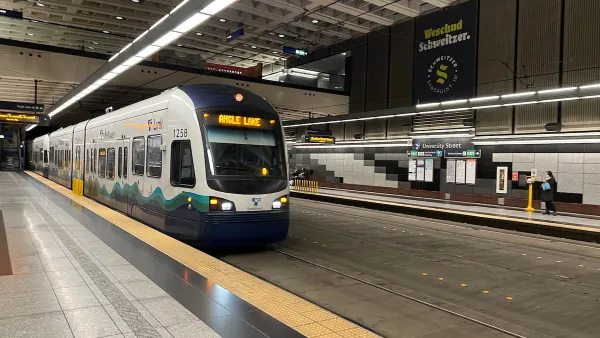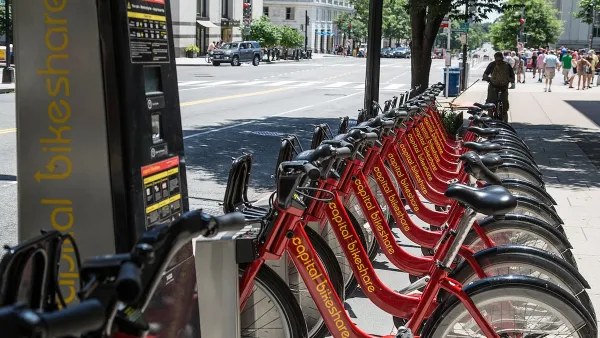While bikeshare is popular with planners and local officials all over the country, in some cities it still hasn't proven popular with people. One author has some thoughts on how bikeshare can begin to attract larger numbers.
Utpal Dholakia examines a potential antidote to the widespread resistance to public transit, in the era of automobile:
Against the backdrop of general malaise and stagnation, public bike-sharing programs feel like a breath of fresh air. These programs are popping up in one city after another across the United States.
The article provides explanation of bikesharing, for the uninitiated, and also provides several angles from which advocates and planners can start to build bikeshare systems that appeal to the masses both as a new form of transit and as an alternative to the automobile. For instance, one potentially appealing aspect of bikeshare is already in place, according to Dholakia: "Unlike other public transit methods, [Bikeshare] transfers control over getting from point A to point B back to the consumer."
The biggest impediment to bikeshare adoption, according to Dholakia, is the perception of bike safety. Dholakia lays out a gameplan to address the perception of safety on bikes, with more detail in the article: 1) provide clear explanations of risk, 2) target messages for people with different levels of comfort or concern, and 3) target locations for bikeshare where risk is relatively low.
FULL STORY: How to Make Public Bike-Sharing More Popular

National Parks Layoffs Will Cause Communities to Lose Billions
Thousands of essential park workers were laid off this week, just before the busy spring break season.

Retro-silient?: America’s First “Eco-burb,” The Woodlands Turns 50
A master-planned community north of Houston offers lessons on green infrastructure and resilient design, but falls short of its founder’s lofty affordability and walkability goals.

Delivering for America Plan Will Downgrade Mail Service in at Least 49.5 Percent of Zip Codes
Republican and Democrat lawmakers criticize the plan for its disproportionate negative impact on rural communities.

Test News Post 1
This is a summary

Test News Headline 46
Test for the image on the front page.

Balancing Bombs and Butterflies: How the National Guard Protects a Rare Species
The National Guard at Fort Indiantown Gap uses GIS technology and land management strategies to balance military training with conservation efforts, ensuring the survival of the rare eastern regal fritillary butterfly.
Urban Design for Planners 1: Software Tools
This six-course series explores essential urban design concepts using open source software and equips planners with the tools they need to participate fully in the urban design process.
Planning for Universal Design
Learn the tools for implementing Universal Design in planning regulations.
EMC Planning Group, Inc.
Planetizen
Planetizen
Mpact (formerly Rail~Volution)
Great Falls Development Authority, Inc.
HUDs Office of Policy Development and Research
NYU Wagner Graduate School of Public Service





























